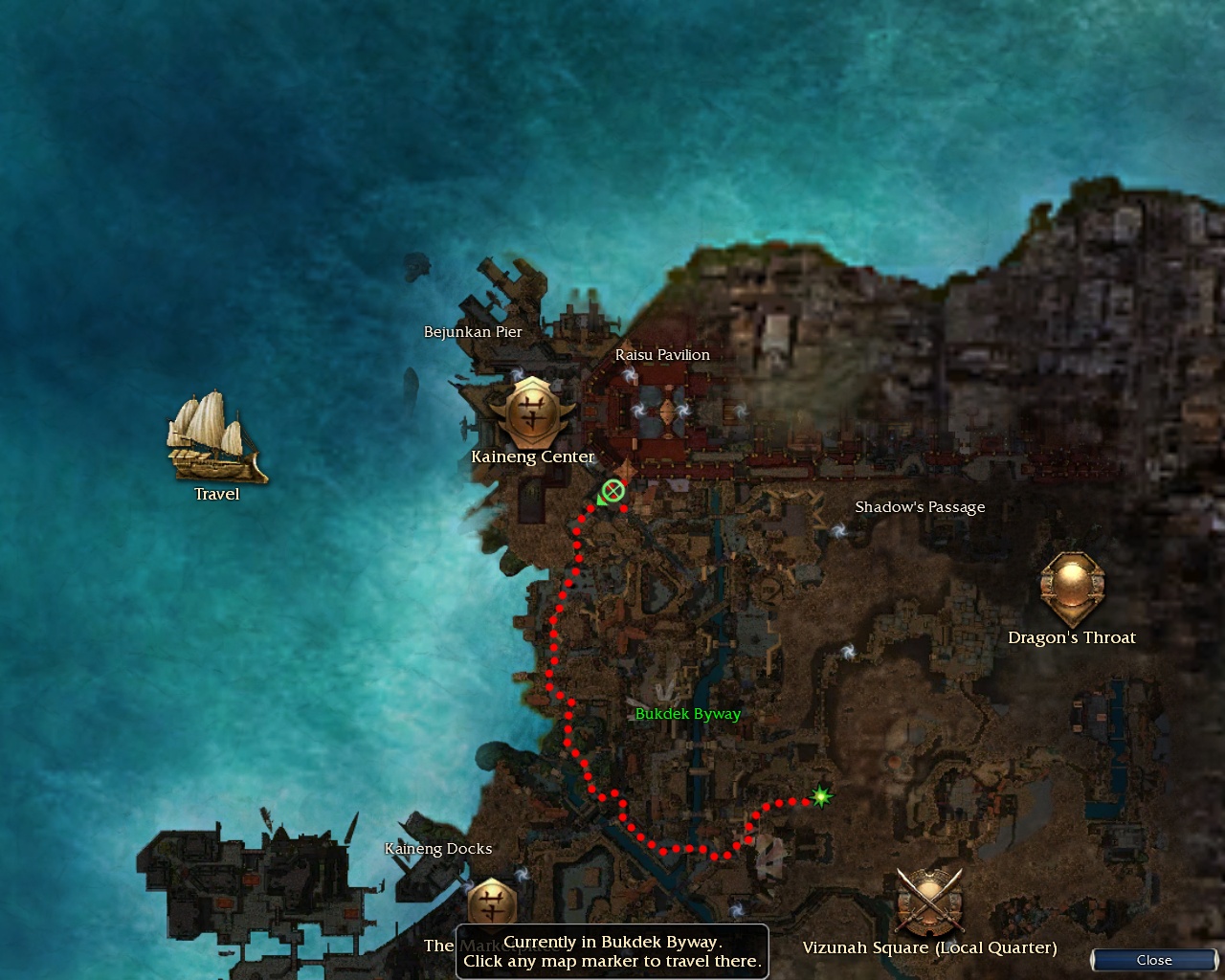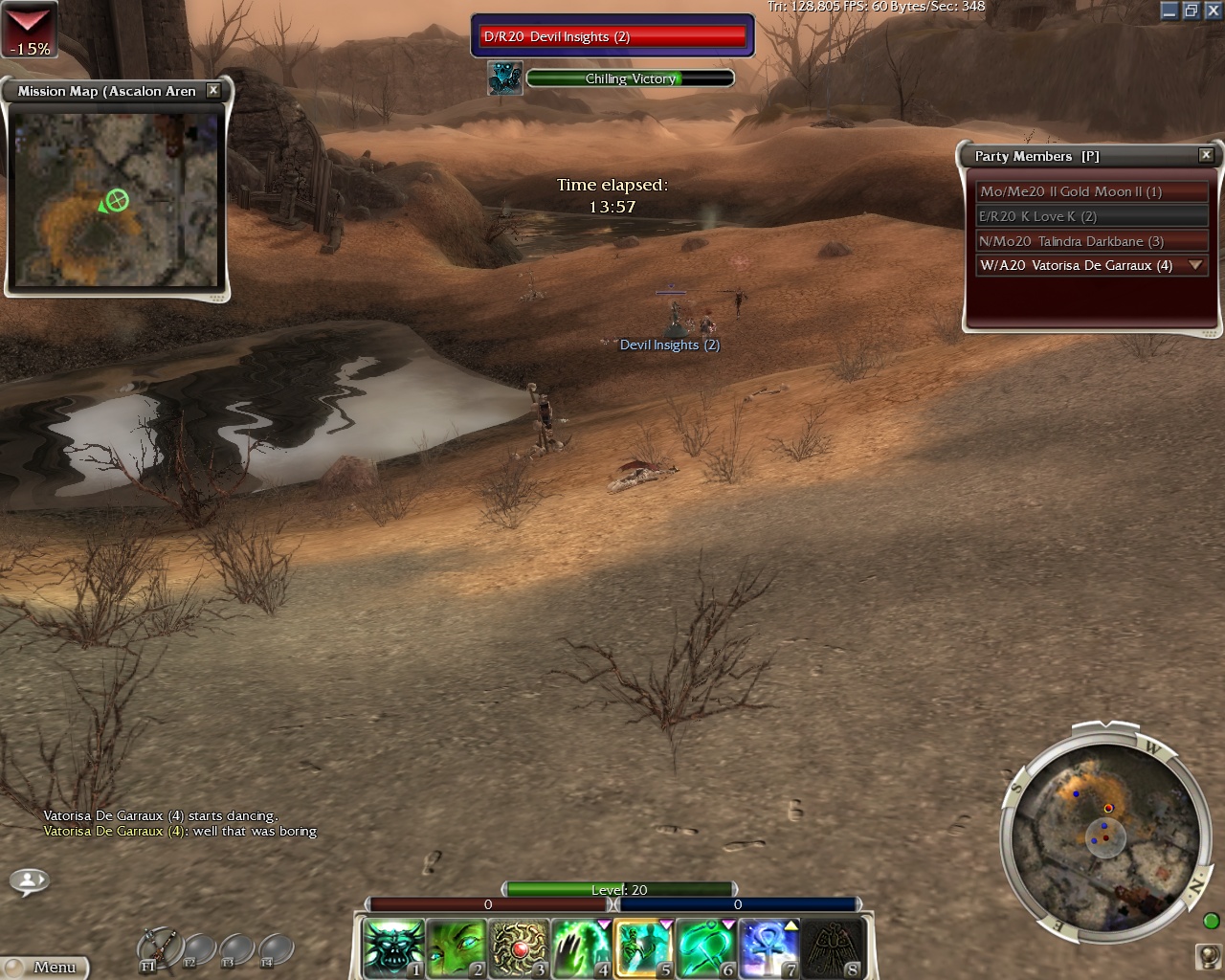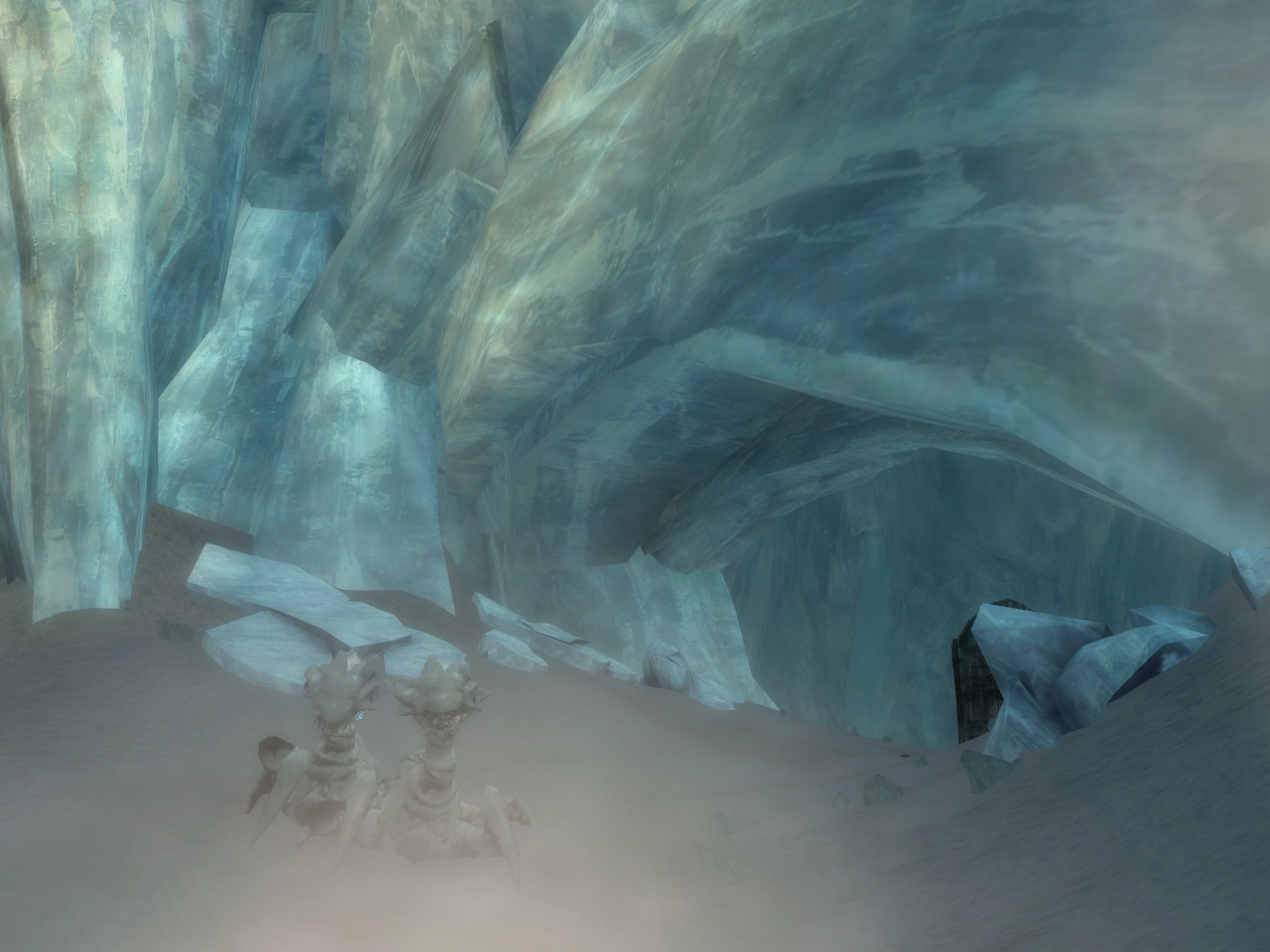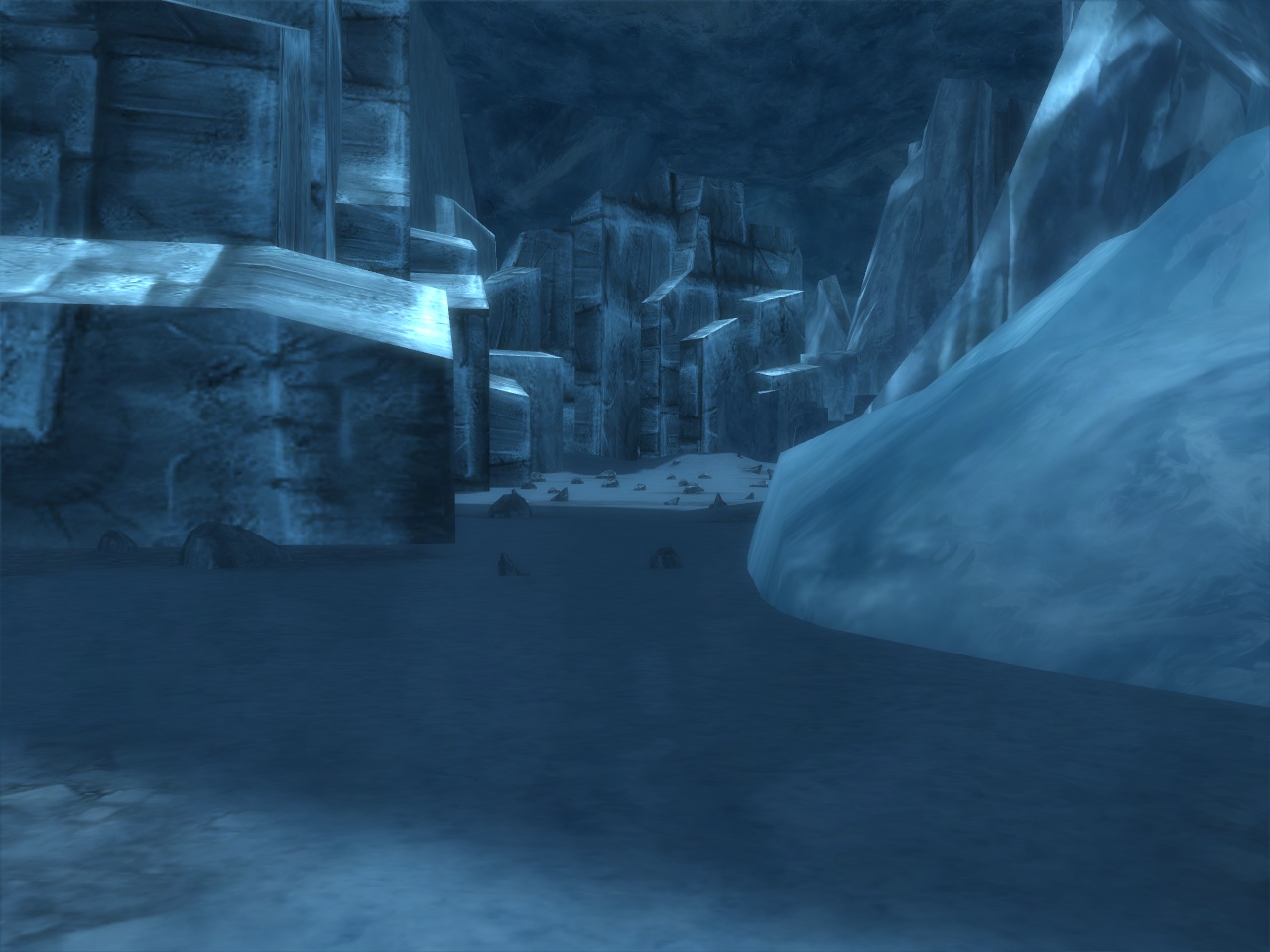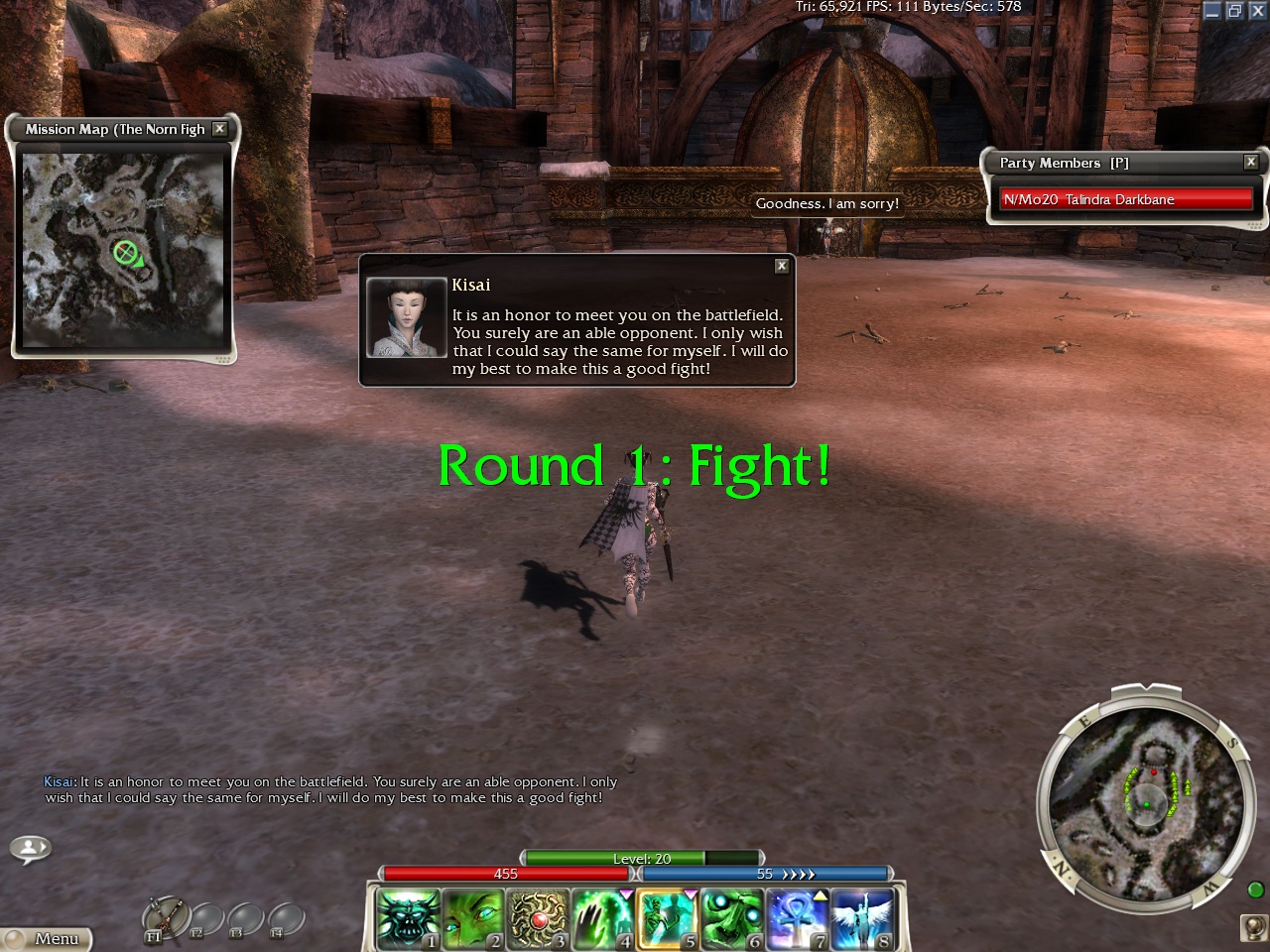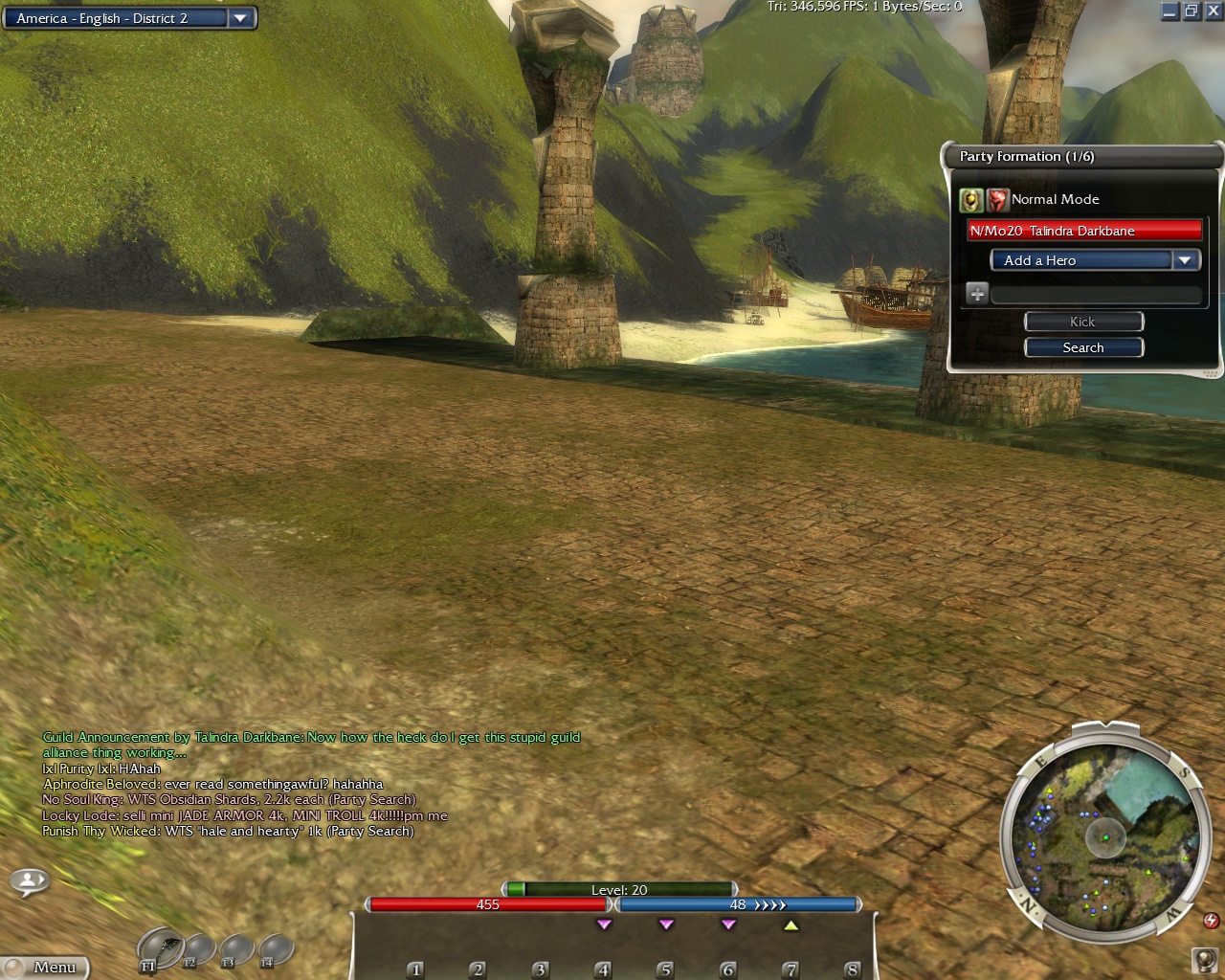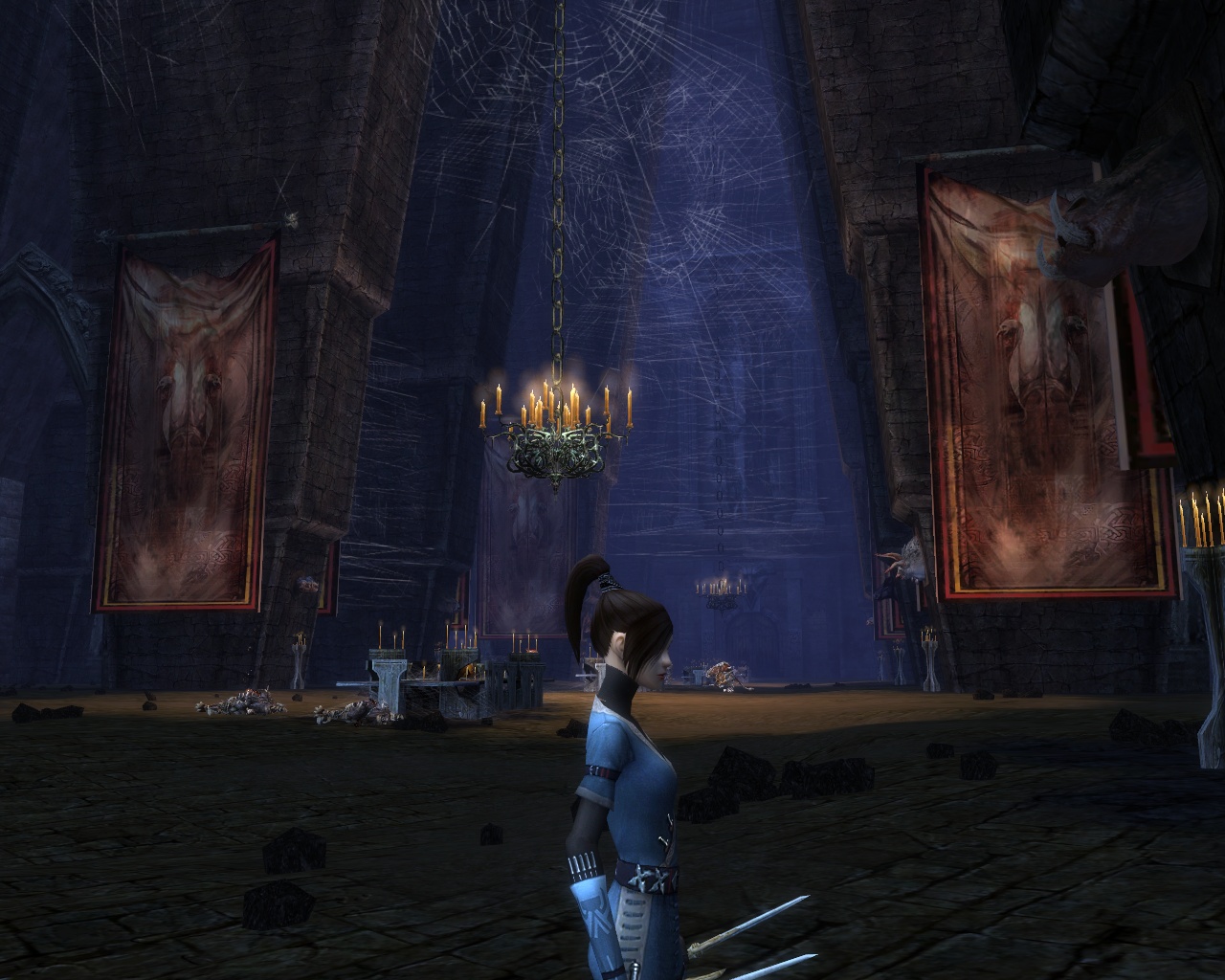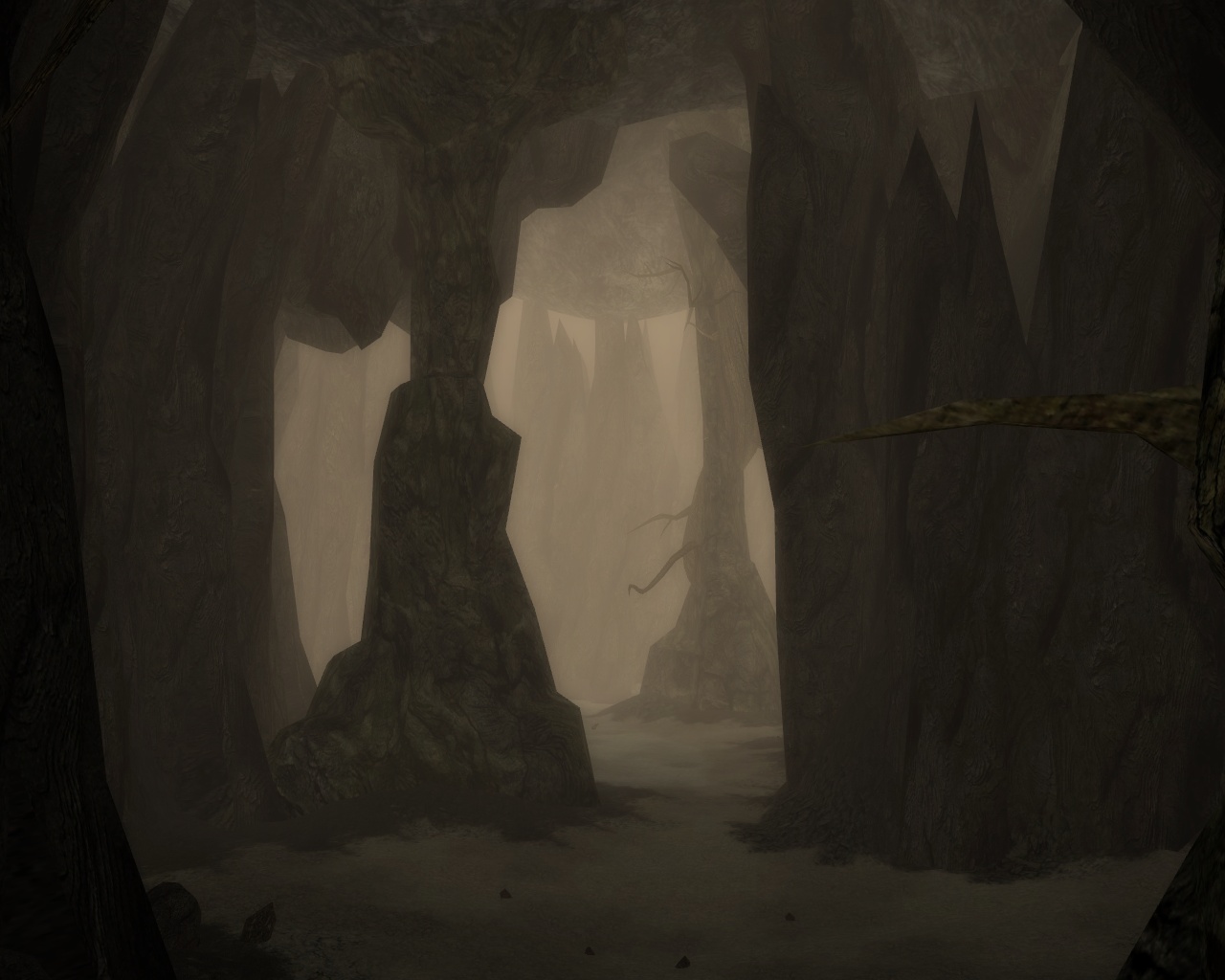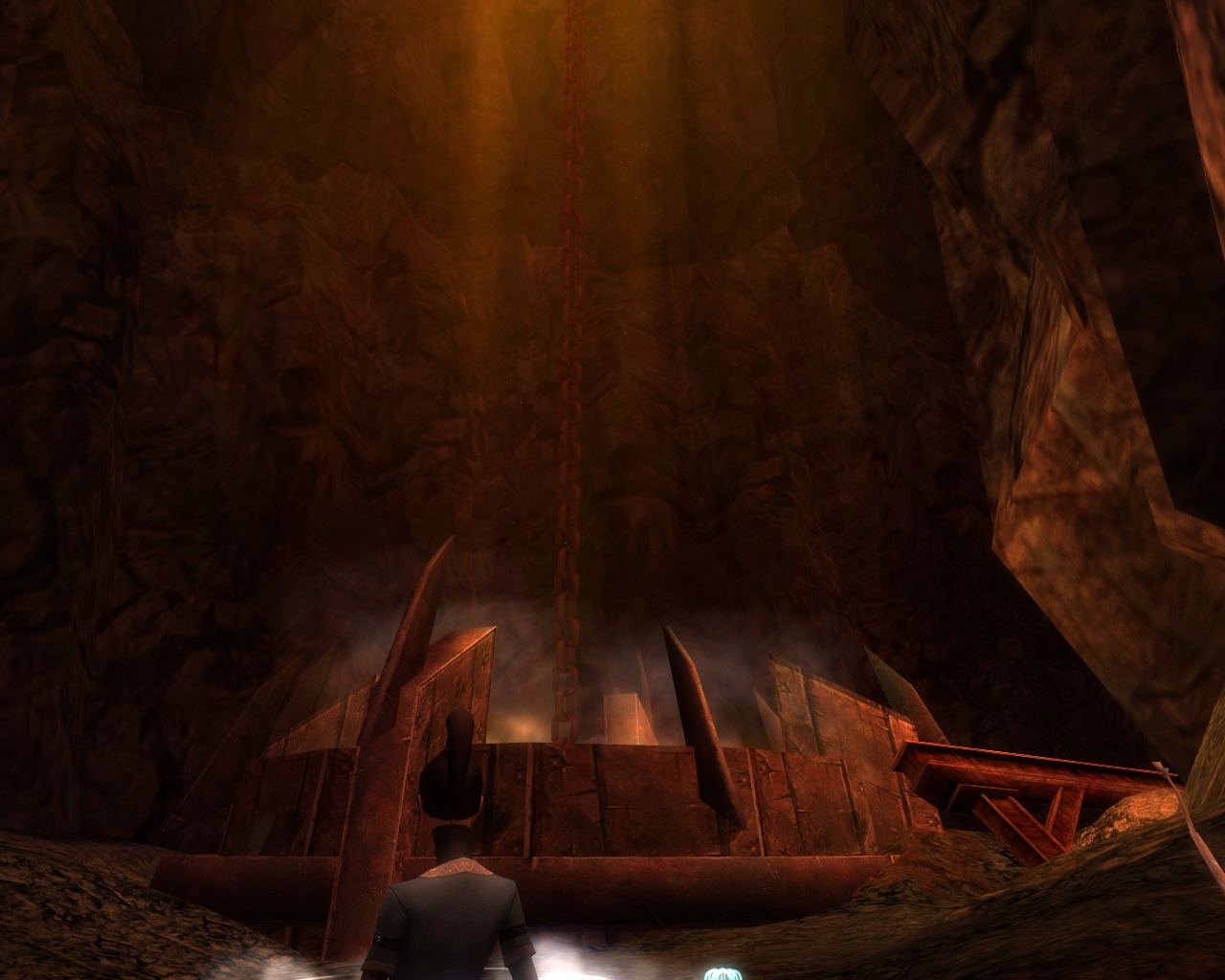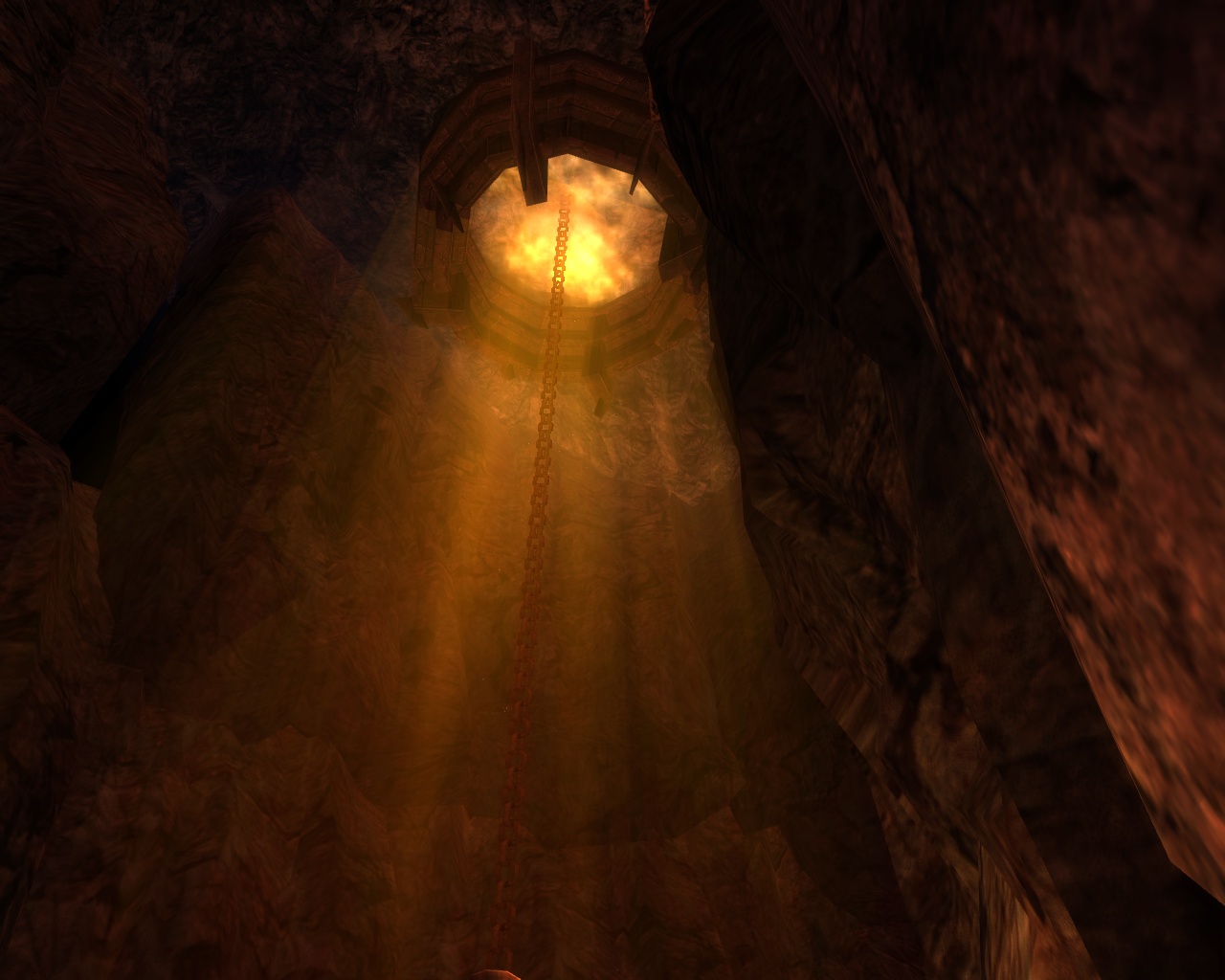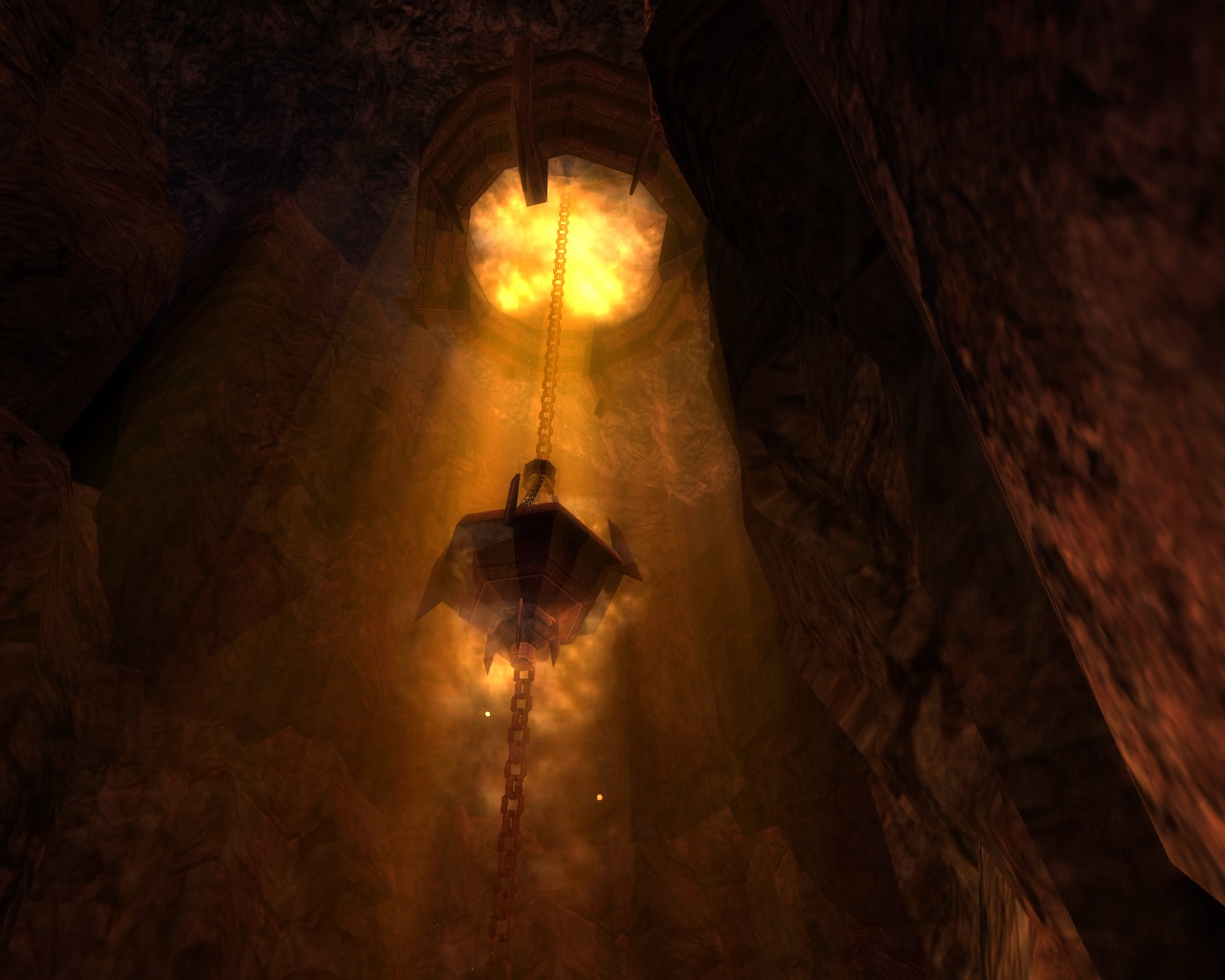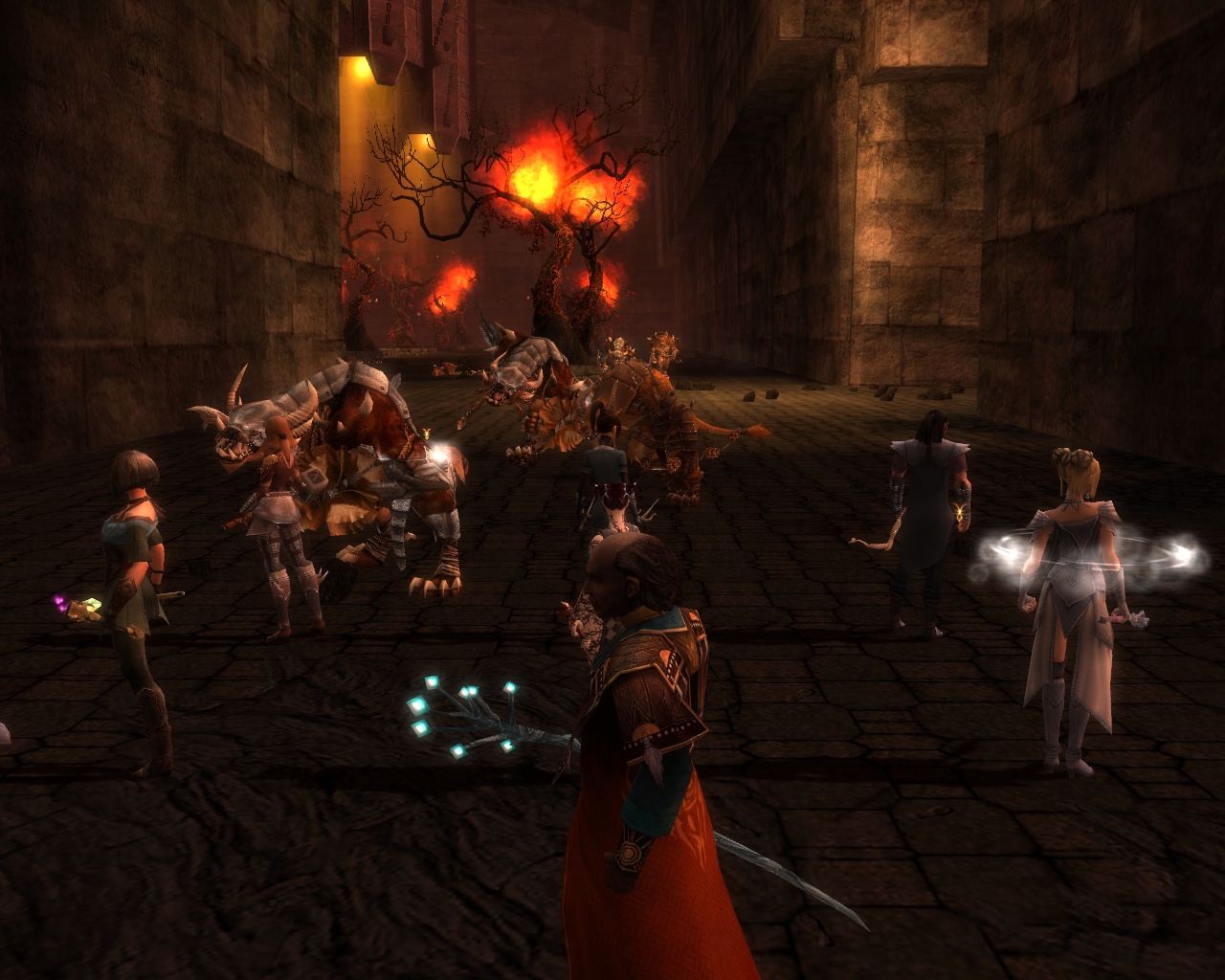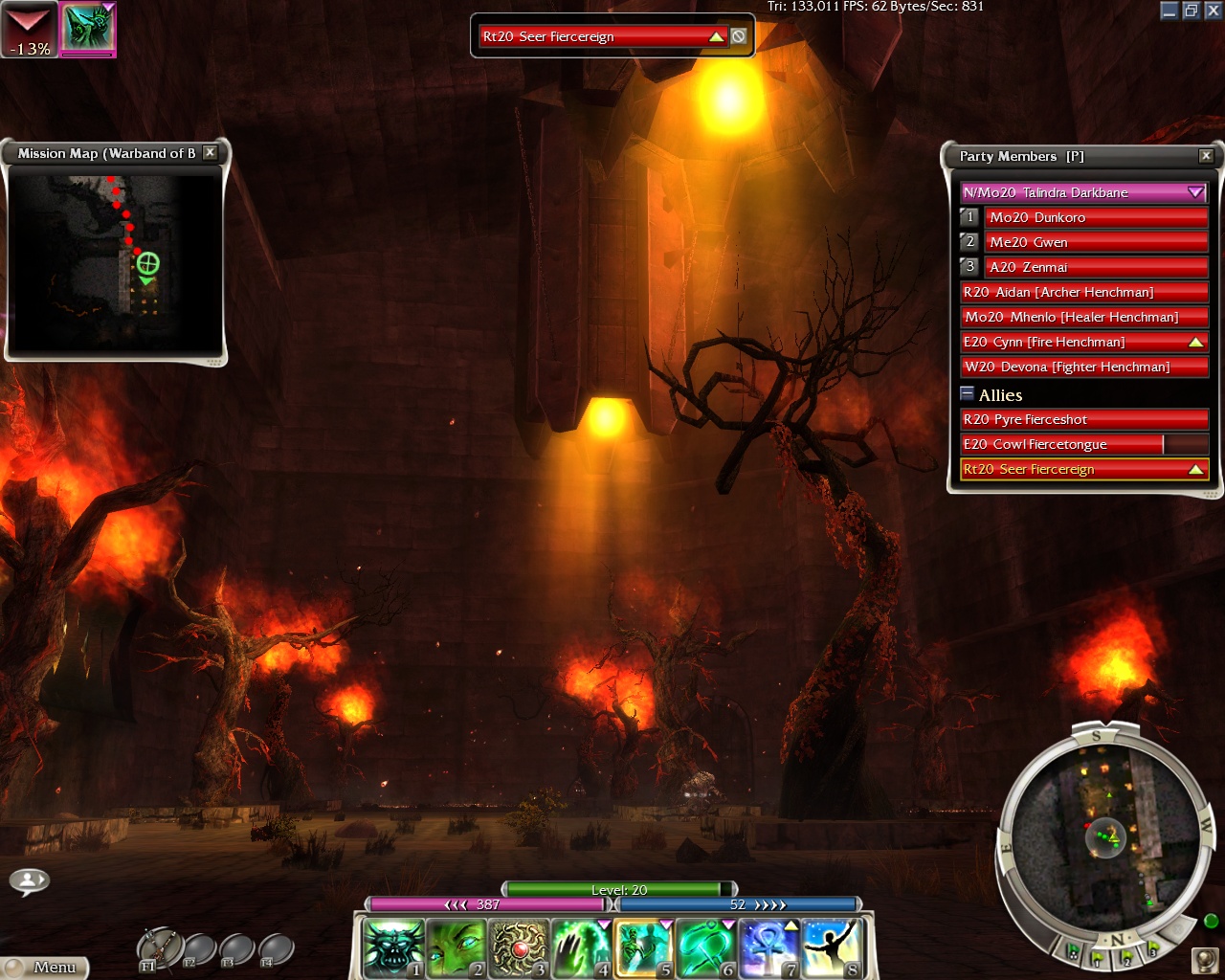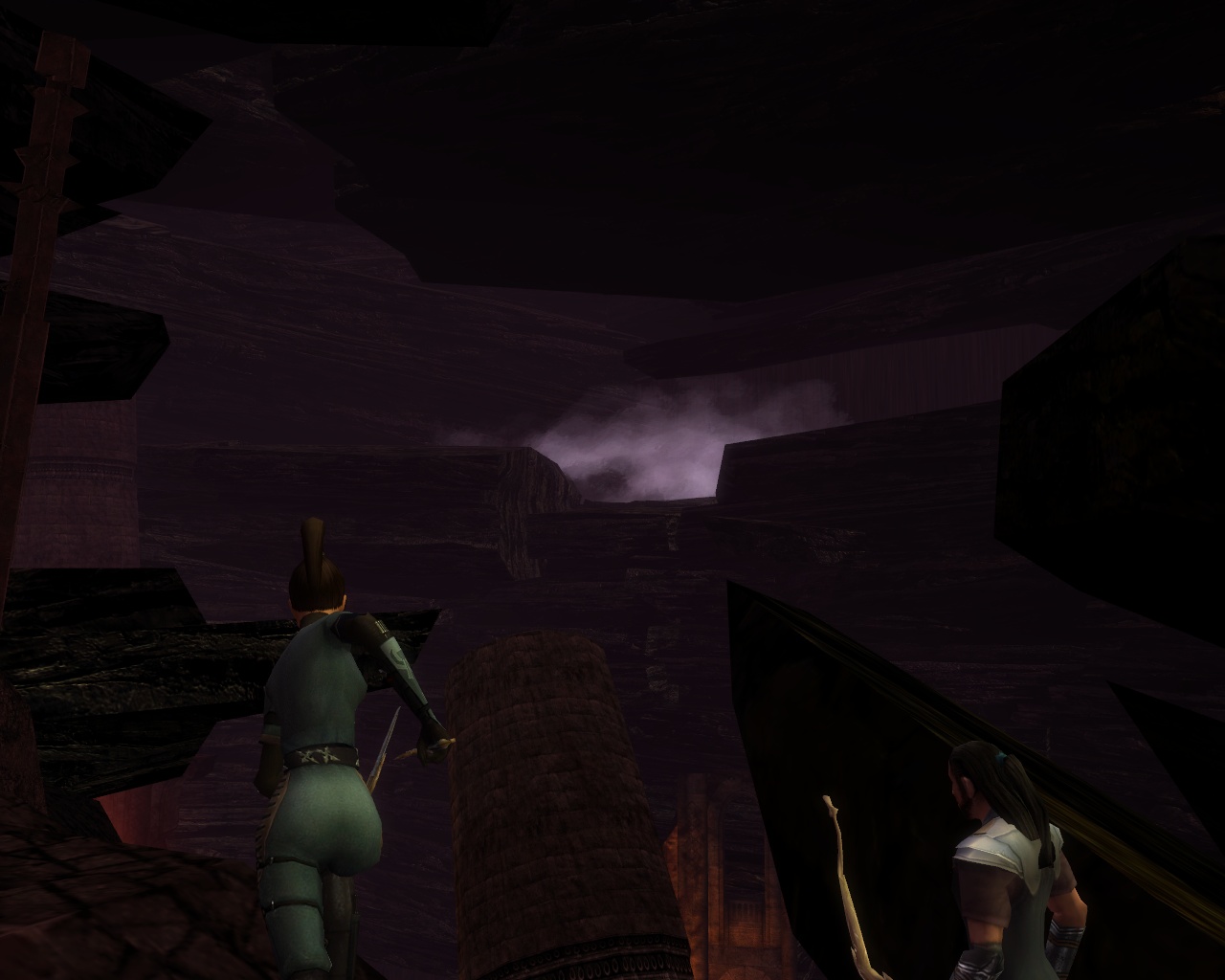In early 2007, I got a new computer. While my old one was a 1.5Ghz Pentium 4 with 384MB of RAM, a 32MB GeForce2 GTS graphics card, and Windows Millenium (which I still love! But anyway.), the new one was a Core 2 Duo E6600 with a brand new 320MB GeForce 8800 graphics card, the new OS Windows Vista (which I also like a lot), and lots of RAM. It was a huge upgrade, and I’d end up having the computer, with a few upgrades, for ten years.
When I got it, I remember thinking that maybe now I’d play PC games more again, like I used to. By this point I already noticed that I was playing them less than I had before, in favor of classic console games mostly. Well… that didn’t change. The computer was a lot better than the old one in many ways, but I mostly kept playing older console games, only playing games on the PC here and there. I started playing more modern games again in maybe 2016 and would say that now I play a mixture of older and newer games, but that’s well in the future here.
So, when the new PC arrived, I made sure to try out Guild Wars, still one of my favorite PC games, and I immediately noticed how much better the game looked! These screenshots are the same exact game as before, it’s just running on a better computer actually able to get the most out of the game. The difference is dramatic and looks great, and it ran at a stable 60fps almost all of the time too! Despite this I still played a lot less of the game than I had in the previous few years, but the repetitive nature of the almost entirely clicking-a-skillbar gameplay had kind of gotten old so I wanted a break. Still, enjoy the nicer-looking screenshots. This article has 45 screenshots in four parts, ten from for April ’07, four from the August ’07 Guild Wars Eye of the North Sneak Peak event, 11 from November ’07, and 20 from January to October ’08.
Please note, the first images here are from April and then it skips to August because that’s what my screenshots do, they go from February to April to August. From this point on long gaps like this between screenshot batches will be normal.
Additionally, with these larger, higher-resolution screenshots, please remember to click, or center-click, on the images to open full-size versions of the images, instead of the small thumbnails.
A. April 2007: Heroes
In the world of Guild Wars, while the game was still fairly recent, 2007 was the last year with new paid content released. Ten months after Factions, Guild Wars: Eye of the North released in August 2007. Unlike Factions and Nightfall from 2006, which are technically stand-alone and do not require owning Prophecies, you can only play EotN after finishing one of the previous three campaigns. The campaign is set in new parts of the Prophecies area of the continent, but you don’t need to own Prophecies, any of them will do. Before EotN released, though, GW went quite some time with few updates. Arena.net was having some problems deciding what they wanted to do next — did they want to make another full stand-alone campaign, an add-on, or what? How will it work? One campaign in progress got cancelled before Eye of the North was finally approved. The resulting game was fantastic, but for paid content that was it for the game. I’ve always been disappointed that the game was abandoned so quickly for a successful game of this kind, it deserved so much better!
So, while Factions had been followed with Nightfall only six months later, most of a year went by between Nightfall and Eye of the North. I did not capitalize, however, and continued barely touching Nightfall. It’s a good campaign and I like a lot of things about it, but somehow I kept stopping for long periods of time, sometimes because it was hard and I was playing it all solo and sometimes because, while great, I just didn’t enjoy the campaign quite as much as Prophecies or Factions. Still, having FINALLY finished it much more recently, Nightfall is a fantastic campaign I should have played a lot more of earlier. I didn’t, oh well.
Now, Nightfall released in the previous article, but I did not discuss the following issue that I have mentioned here and there at length then, so I will now. Nightfall, beyond having a large and quite difficult new campaign, added one other major new feature to Guild Wars, which I have mentioned here and there and is both essential and unfortunate: Heroes. Heroes are AI allies that you have much greater control over than the Henchmen that were the only thing available previously. Where Henchies each have a specific build you cannot change, Heroes are fully customizable. Indeed, you set Heroes’ skillbars up yourself, working from the skills you have unlocked on your account. You can also buy skills for Heroes only, if you want some more skills for classes you don’t really play. The AI won’t necessarily be as effective with some skills and builds as a human would, so reading up online about what kind of Hero builds work better is very useful, and Heroes are much better if they are in classes you have played extensively with other characters, but even so the ability to fully set your AI companions’ skillbars was fantastic.
The other major addition ANet made with Nightfall is giving players greater control of AI movements. Nightffall added some new buttons to the minimap which you can direct your AI allies with. Four buttons appear during gameplay when you’re in a mission or explorable area with AI allies. The first three AI allies can be individually controlled, and the rest of your AI allies can be all moved together with a fourth button. Where before they would just follow you around and could not be controlled beyond that, STRONGLY disadvantaging them versus human allies and encouraging the random-player-groups gameplay that I loved so much in the PvE (humans vs. AIs) part of the game, with these two additions that quickly started to break down. To be fair, the sheer volume of content that had been added to the game, and people like me starting to play the game less, didn’t help either; where before everyone was playing the same campaign, now there were three and people were scattered through all three, without as many people in each of them. As the years progressed, having AI allies became essential, as finding player groups for any number of PvE tasks rapidly became nearly impossible where it used to be easy, pre-Nightfall. I still very much miss this element of the game, it was one of the things I loved about Guild Wars and Nightfall took it away. My dislike of this is an important part of why I didn’t play much Nightfall for a long time. However, how playable would Guild Wars be now without these additions? A lot of the game would be even more impossible solo!
So, on the one hand, I greatly miss the Guild Wars of 2004-2006, where mostly randomly collected player groups did missions, quests, and explored together. But on the other hand, Heroes and, perhaps even more, being able to give your AI allies direct ‘move here’ orders are essential things in a game with a lower and more spread-out playerbase. You would never be able to always find human allies in every mission of this game at any time even if they had never added these things, so they are good.
It’s just a shame they had to add them, because it probably did more harm to the game than good — people really noticed how much better AI allies had become, and looking for player groups dropped off dramatically in very short order. Even when the playerbase was still high, while it was certainly still possible to find player groups sometimes, a whole lot of people who previously would have looked for players to group with moved over to Heroes instead because they’re almost as good and are always available. It’s a very understandable choice that I would eventually do as well, because it makes the PvE game playable at any time, but as a result the game lost a lot of the sense of community that it had before. Where in 2004 I had preferred Guild Wars over World of Warcraft in part because GW emphasizes grouping with other players you aren’t in a guild with much more, by ’07 that differential had surely gotten closer. But, again, these changes also made the PvE game possible to play today in a way it would not be otherwise. Late-game Guild Wars PvE is crushingly difficult as it is, without Heroes it’d be too hard to bear! These changes really go both ways. So, for both good and ill, the addition of Heroes is quite possibly the biggest change Guild Wars would have in its life so far.

Even if I was not playing a lot of Guild Wars anymore like I had been in 2004-2006, however, it was still a game I went back to with at least some regularity. Including my estimates for beta playtime, in early ’07, as I say in this conversation with some random person, I was at maybe 900 hours played since the first beta. I would only add a couple hundred hours to that over the next ten years.
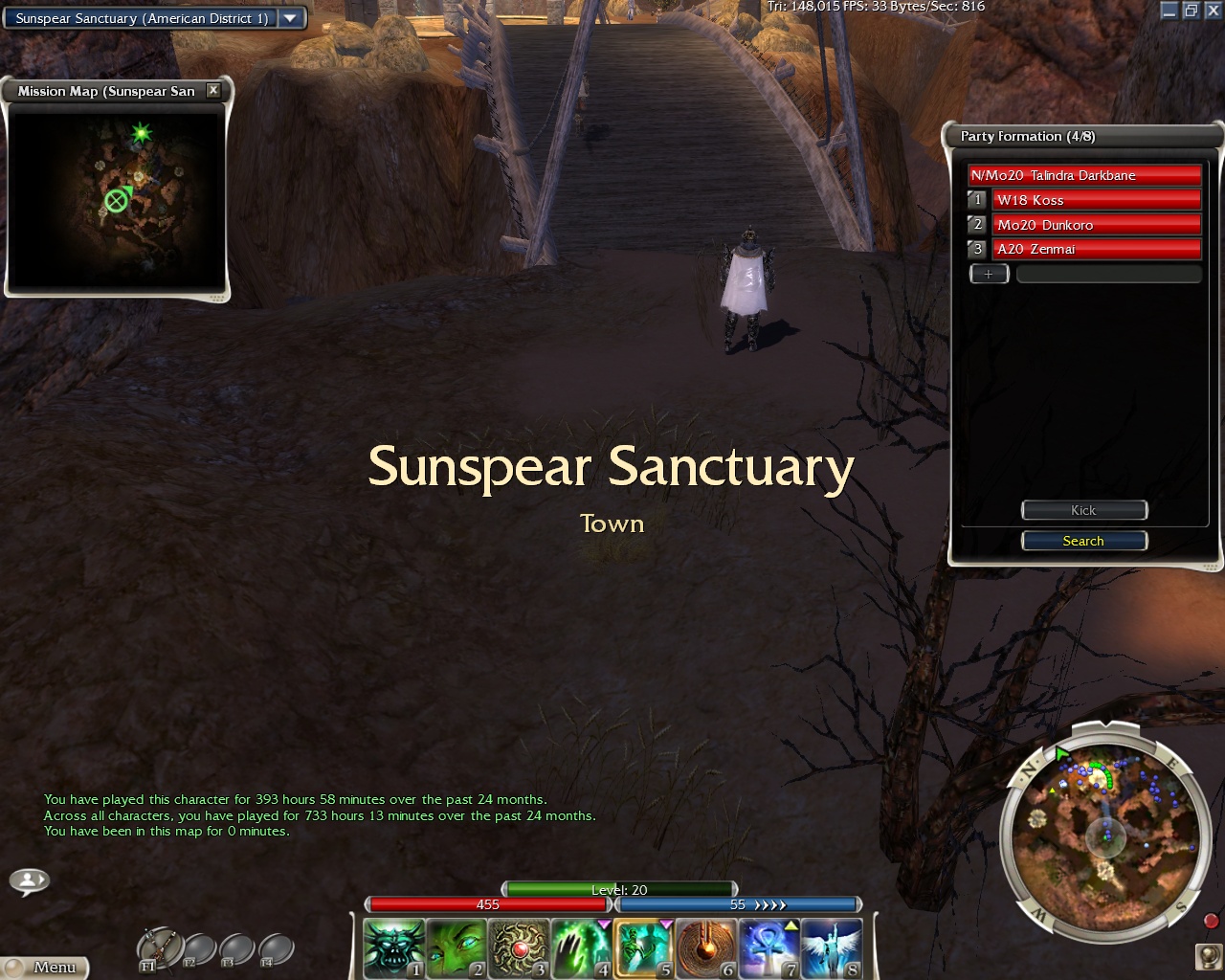
Hey, it’s Nightfall! I’ve finally finished the first post-starter-island mission and gotten onto Kourna proper.

Kamadan, meanwhile, is the campaigns’ main city for interaction with other players. It has since become Guild Wars’ main social hub and trading place.

The random arenas. And yup, this weird water-surface bug still works. Everything looks so much better now though, it’s all smooth and great looking!
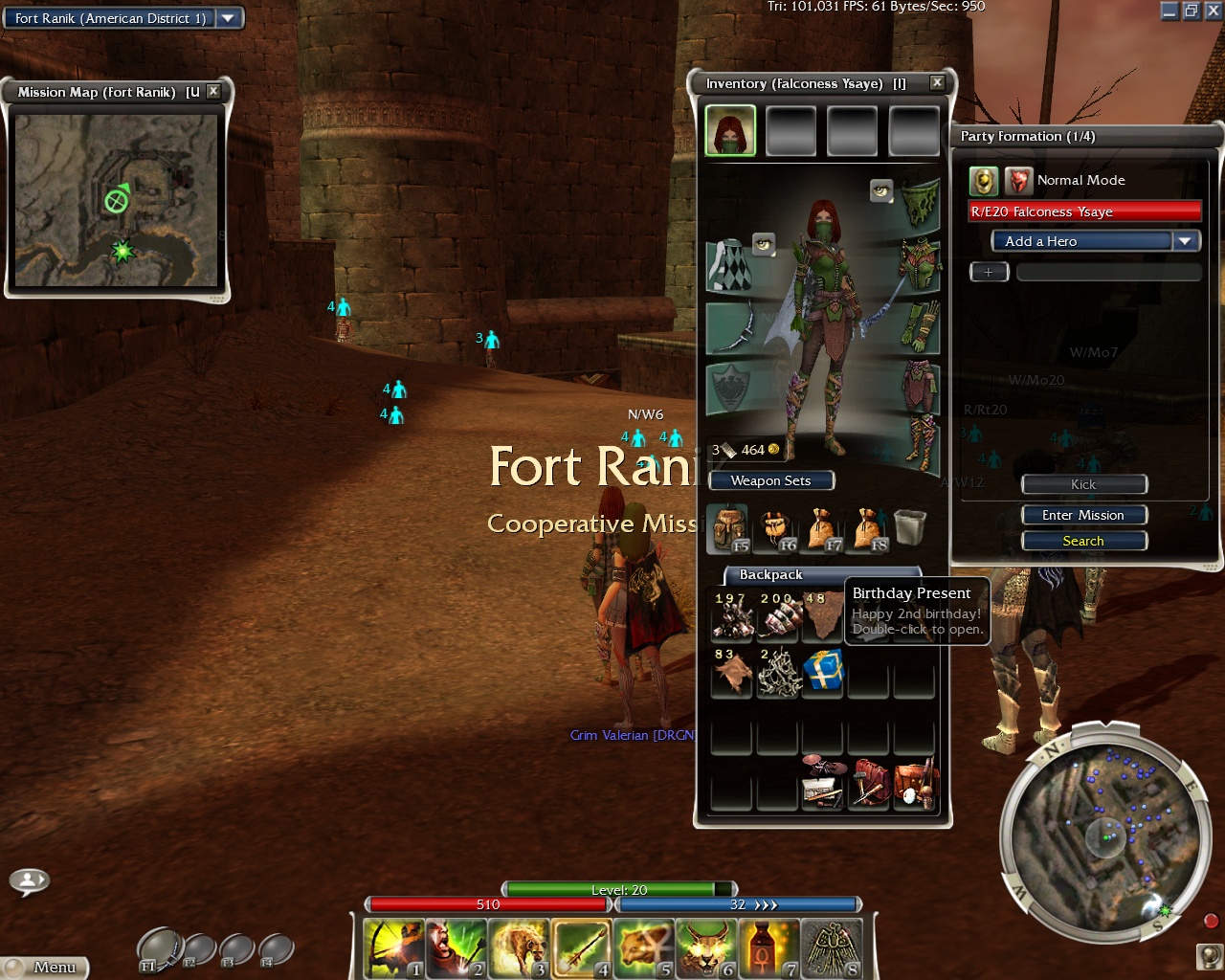
I always like to go back to seared Ascalon every once in a while, it’s the first area I saw in this game and still is probably my favorite.
B. August 22-24, 2007 – Guild Wars: Eye of the North Sneak Peek Weekend (Beta Event)
A week before the game released, Arena.net held a very late promotional access weekend event, allowing anyone who owned a Guild Wars campaign to try out the beginning of the soon-upcoming new expansion. I may not have played the game much in months, but was back for this event, I wanted to see how this new campaign would turn out. I only have four screenshots from the event, but from the dates on the files they do show that I was once again here for a Guild Wars “beta”. I don’t think I missed any public test events for the first Guild Wars.
My first impression of EotN was that I was impressed. The first area is a beautiful snowy forest, like the South Shiverpeaks but more detailed and better looking. It’s a pretty stunning looking area and one of the best in the game. And in terms of gameplay, by starting from max level, EotN allowed for harder, more focused play. I liked what I saw in the beta and wanted to play more. And indeed, EotN would end up having a fantastic campaign loaded with interesting features and challenges.

Both in the beta and in the final game, you start EotN with a mission through a pretty great looking cave, fleeing from a threatening invasion…
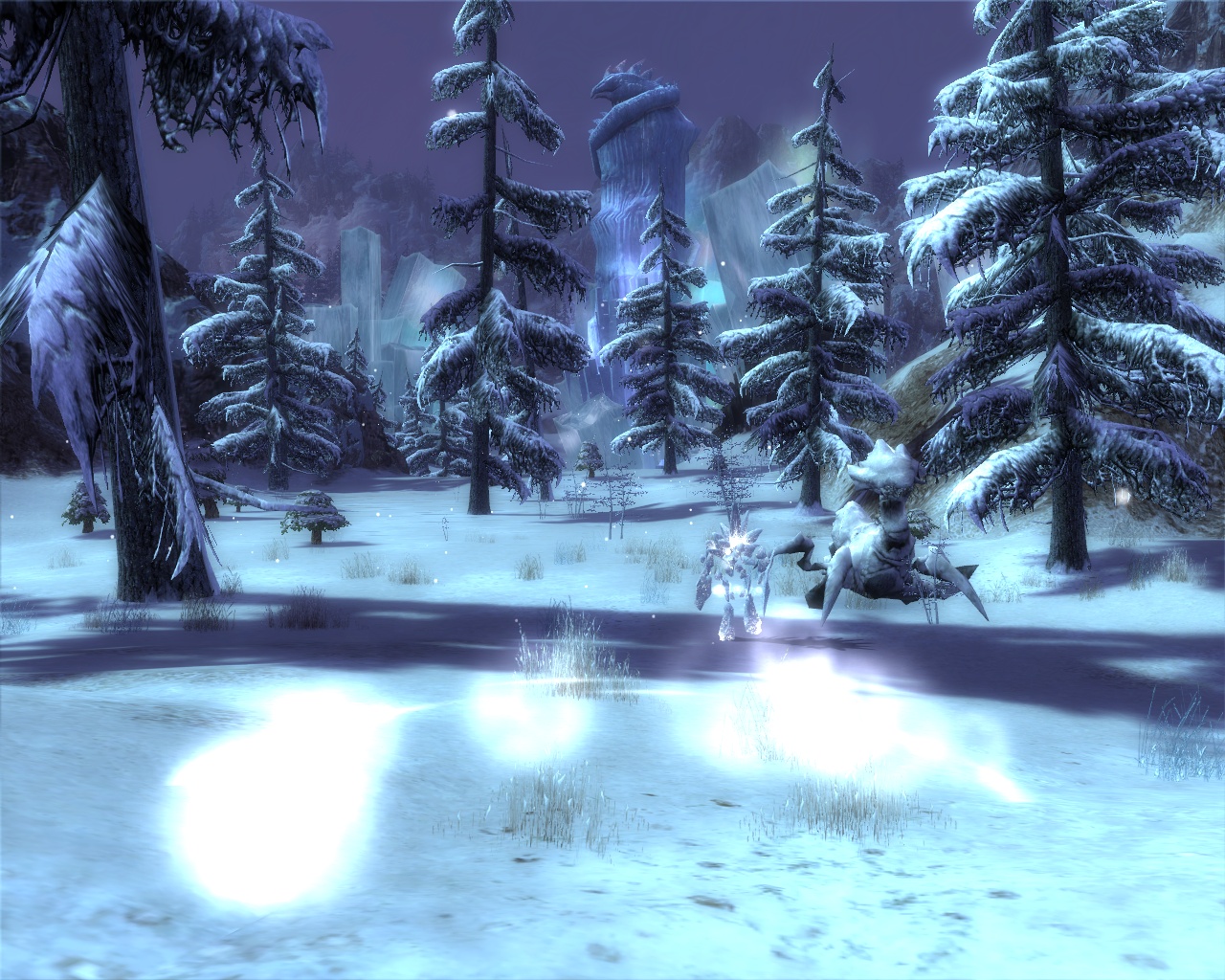
And here we have maybe the first screenshot to really, really show off how much better the graphics are in Guild Wars in my ’07 PC than my ’01 one. From the anti-aliasing to the shiny lighting effects, this looks fantastic! Indeed, the visuals in this shot still hold up extremely, extremely well. Guild Wars’ graphics are some of the best ever.
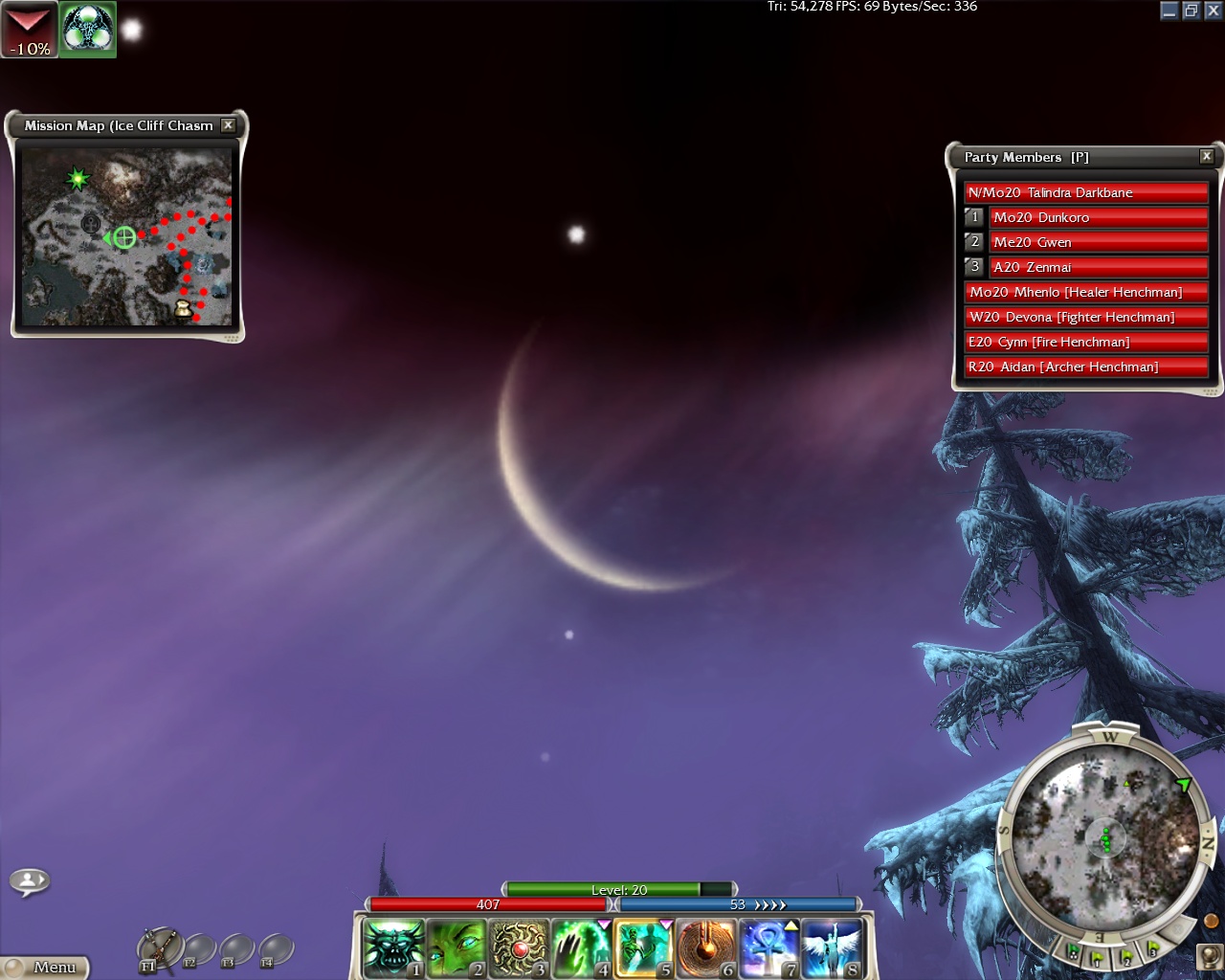
The moon in the sky over this snowy mountainscape looks pretty nice too. I like this shot quite a bit.
C. November ’07 – Gameplay After the Guild Wars: Eye of the North Release
I believe I bought Eye of the North shortly after its release, digitally, but did not take any screenshots for a while. So, this next screenshot batch is from November, when I took 11. Many are quite similar, but I’m going to post all of them anyway.
Eye of the North is a great campaign, but it is quite different from past Guild Wars releases in important ways. The difficulty is higher, as ANet cut back on lower-level content and started moving towards adding more high-level options to the game; the new skills and abilities are fewer and more focused, with far less of the bloated overlap of the skillsets that the two 2006 releases have; ANet started experimenting with having things go on in the world as you explored, something they would do a great deal more of in Guild Wars 2; missions do not have dedicated outposts before them like they used to, so you gather in towns for them; and more. The previously mentioned uncertainty about what ANet should do with Guild Wars shows in the game, as they tried many new things in each of the four retail Guild Wars releases, but somehow they all work well together despite that, and perhaps in part because of it — the unique touches to each of the four campaigns keep them all interesting and worth revisiting!
As far as the story goes, there will be some very minor spoilers here, so I will block out this paragraph for anyone who wants none. Highlight the text to read it. EotN, as an expansion pack, was the first thing which actually continued the plot after the end of Prophecies, instead of telling other stories set elsewhere. So, the plot returns to the issue of the Charr, among other things. The game introduces several new friendly races, too, including the techie little Asura and the giant, warlike Norns. You still can only play as a human, but the new races add some variety and both fit in the setting pretty well. The expansions’ attempt to show different factions in the Charr and create a friendly, less evil Charr faction kind of works too, though even the “better” ones are still quite violent… though of course, so are humans. That kind of equivocation would be the direction Guild Wars 2 would go in, but thanks to the way Guild Wars began, with the Searing, I don’t want to forgive the Charr. On a related note, that GW:EN brings back the character Gwen is a clever touch, naming-wise. Gwen’s position on the Charr’s a good one. Anyway though, ignoring what they would do in GW2, EotN’s story is well-done, following up on the first game in some interesting ways.
I remember enjoying EotN and steadily playing through it, but looking back, I would not finish the campaign until late June 2009, almost two years after its release. I don’t seem to have any screenshots from then, sadly — the screenshots I have from ’09, which I will start posting next time, do not show any of the ending parts of EotN — but did post about it online, so I know the date. The basic structure of this game is that it has a main campaign of moderate to high-ish difficulty to go through, and optional side dungeons if you want some intensely challenging dungeons designed for human groups. With AI companions most of the dungeons are too difficult for me and I did not have many people to play with anymore by this point, so unfortunately, though adding dungeons to the game was a fantastic idea, I still have not gone through most of them.

The new ice caves might look even better than the ones from Prophecies, which is definitely saying something.

That little tree would probably look better with the camera a little farther away… but this was a ‘lots of first person shots’ set, so instead I got maybe too close for it to look ideal. Oh well. Anyway, we’re running through the wilderness, on the way to our next destination. As always.

At this point in the earlier parts of the EotN campaign, you compete in a tournament, facing off against a series of opponents, many of whom are familiar to people who have played the other campaigns. Here is Warmaster Tydus of Ascalon, a story character.
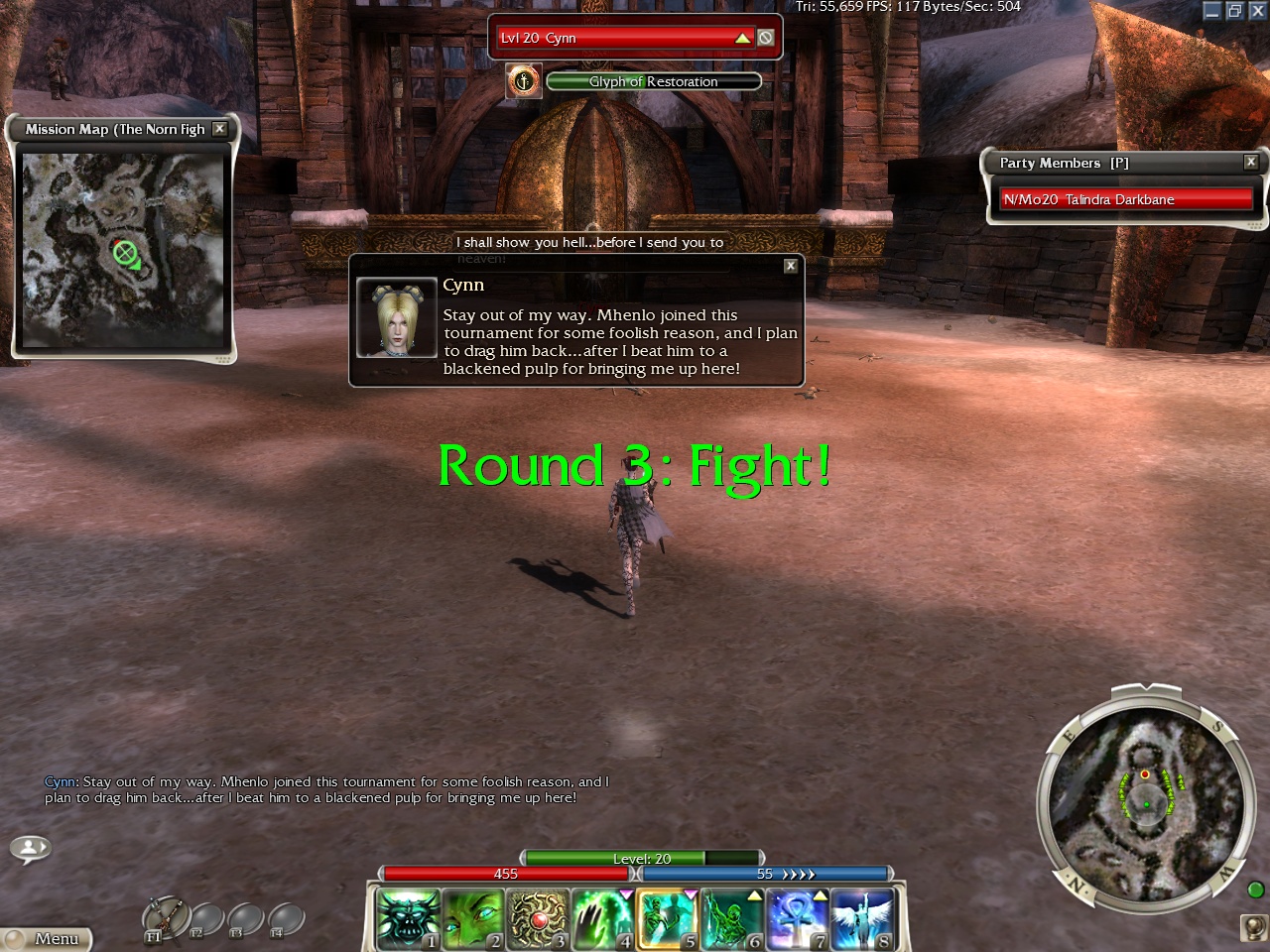
And last, of the ones I took screenshots of anyway, Cynn, one of the main story and henchman characters. Cynn’s “I want to kill as many Charr as possible” probably goes too far, but is not too far off base given what they did to Ascalon… Charr are the enemy!
D. 2008, January to October
These 20 images are all of the screenshots I took in the year of 2008. Yeah, it’s not very many for a whole year; I may not have had many from ’07, but this is even lower. Still, I was playing the game here and there, mostly focusing on slowly working my way through Eye of the North. I may have been only sporadically playing the game, but was making slow progress through EotN, and was definitely enjoying it along the way. This game has some fantastic looking areas, as this image set shows! And the better computer better shows off just how good the game looks, too.

This place is creepy, look at the size of those cobwebs up on the ceiling… great sense of atmosphere!
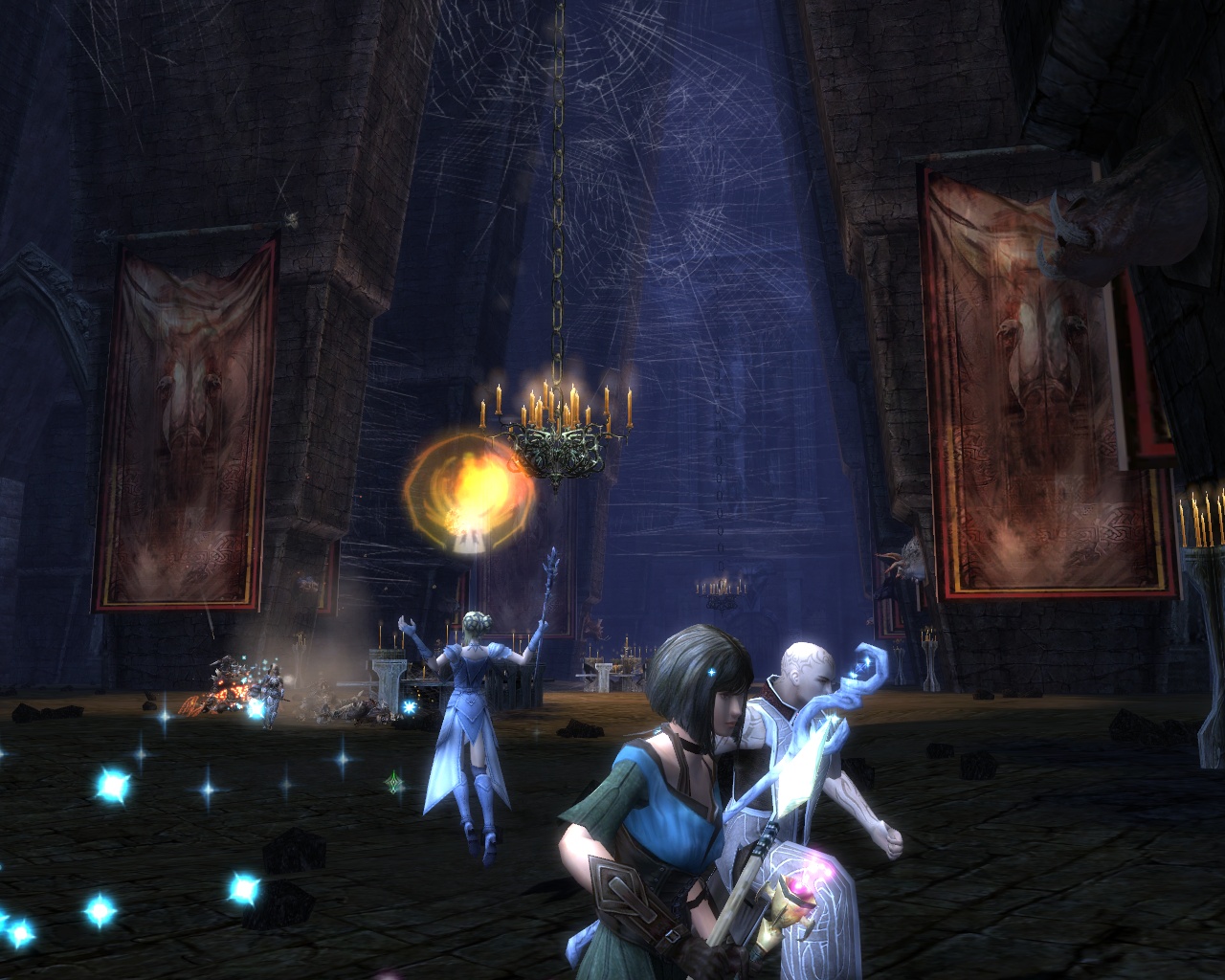
Meanwhile, however, what the party, of me and Heroes as usual now, is doing is fighting some monsters.
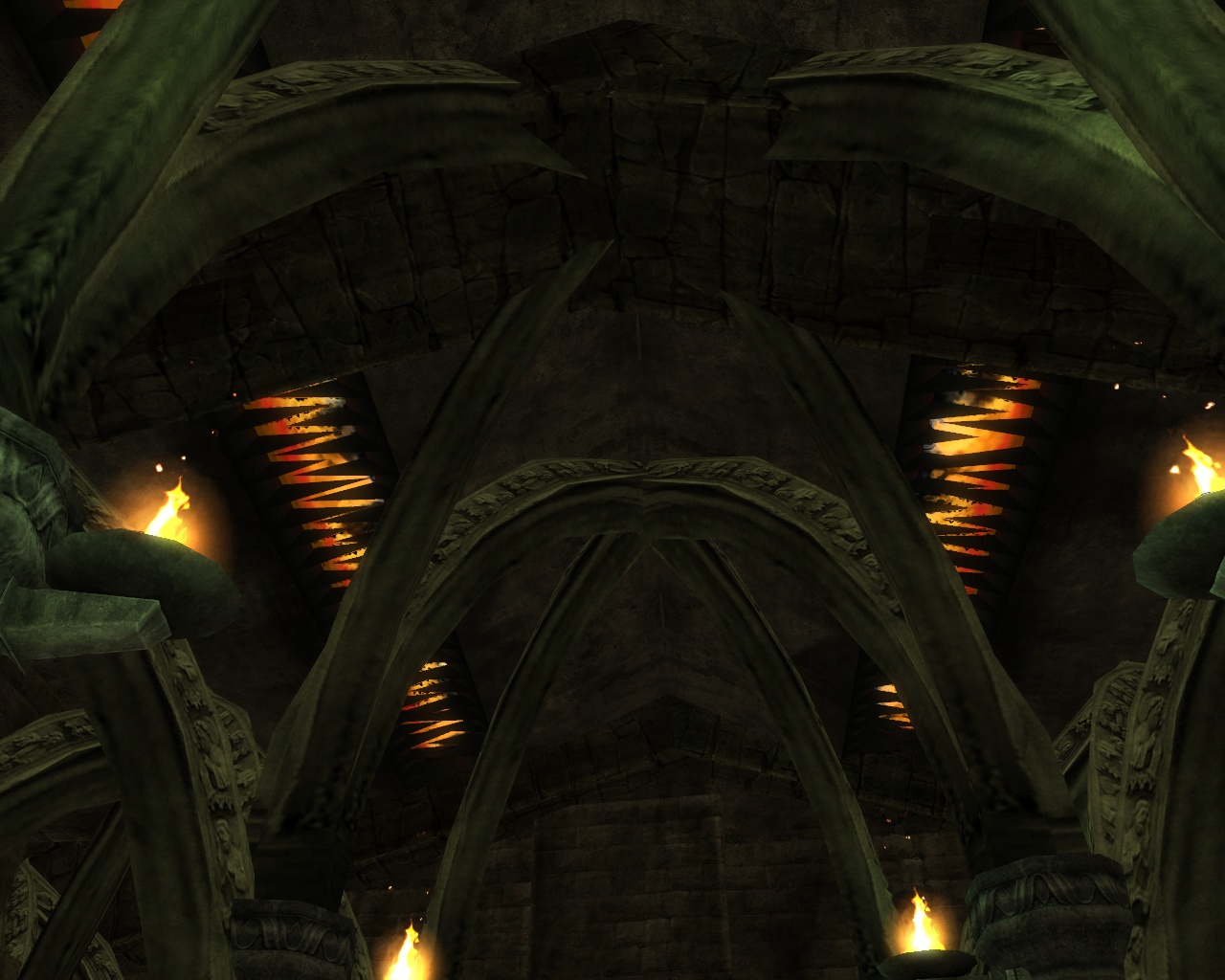
What an interesting, and ominous, building this is! What is that, spike-filled openings in the roof revealing a burning sky? With all of its dungeons, EotN very much makes up for previous Guild Wars campaigns having quite limited numbers of indoor areas, that’s for sure.
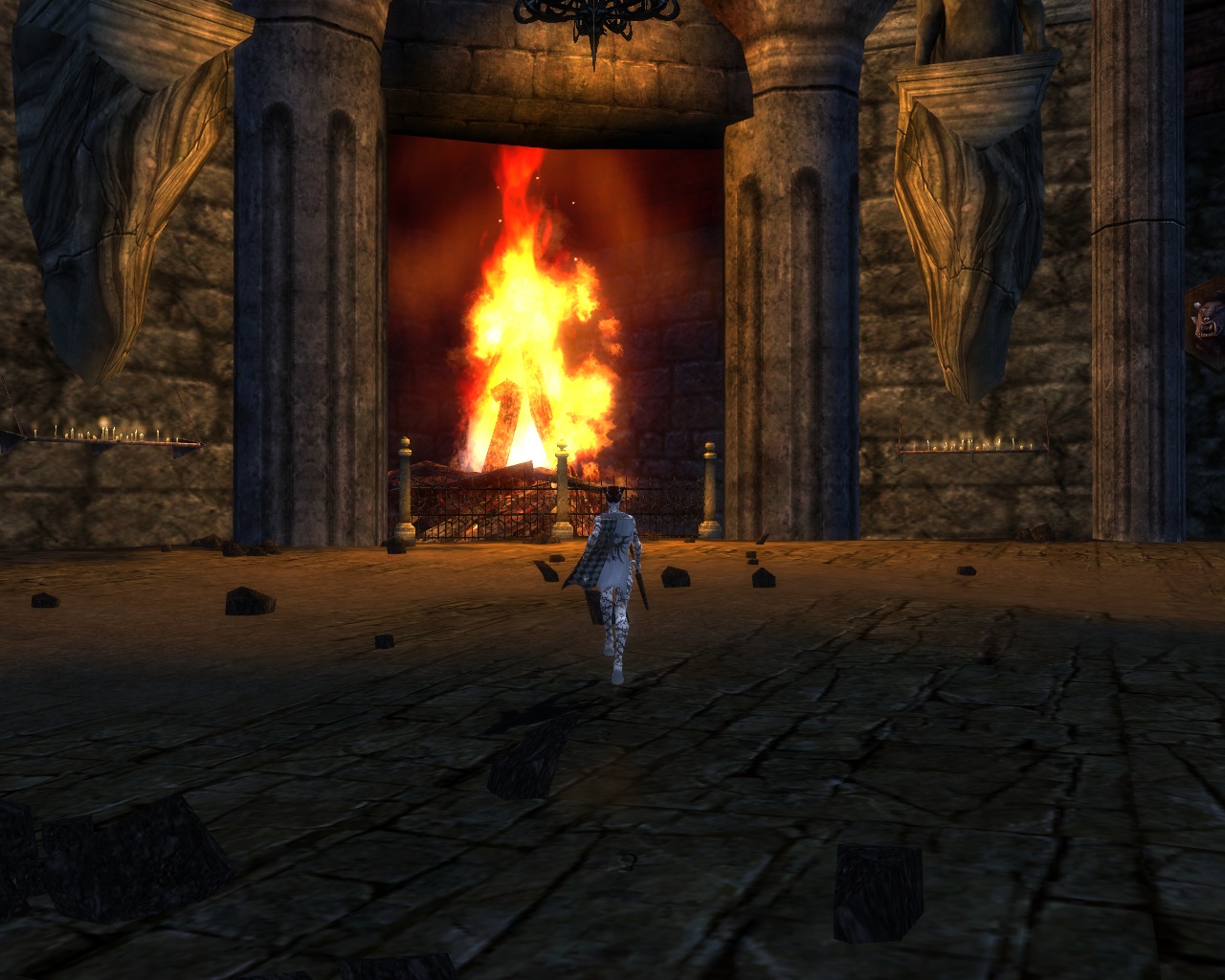
I know Guild Wars architecture is often hugely oversized, presumably to work well in a game, but this fireplace is kind of ridiculous if you think about it…
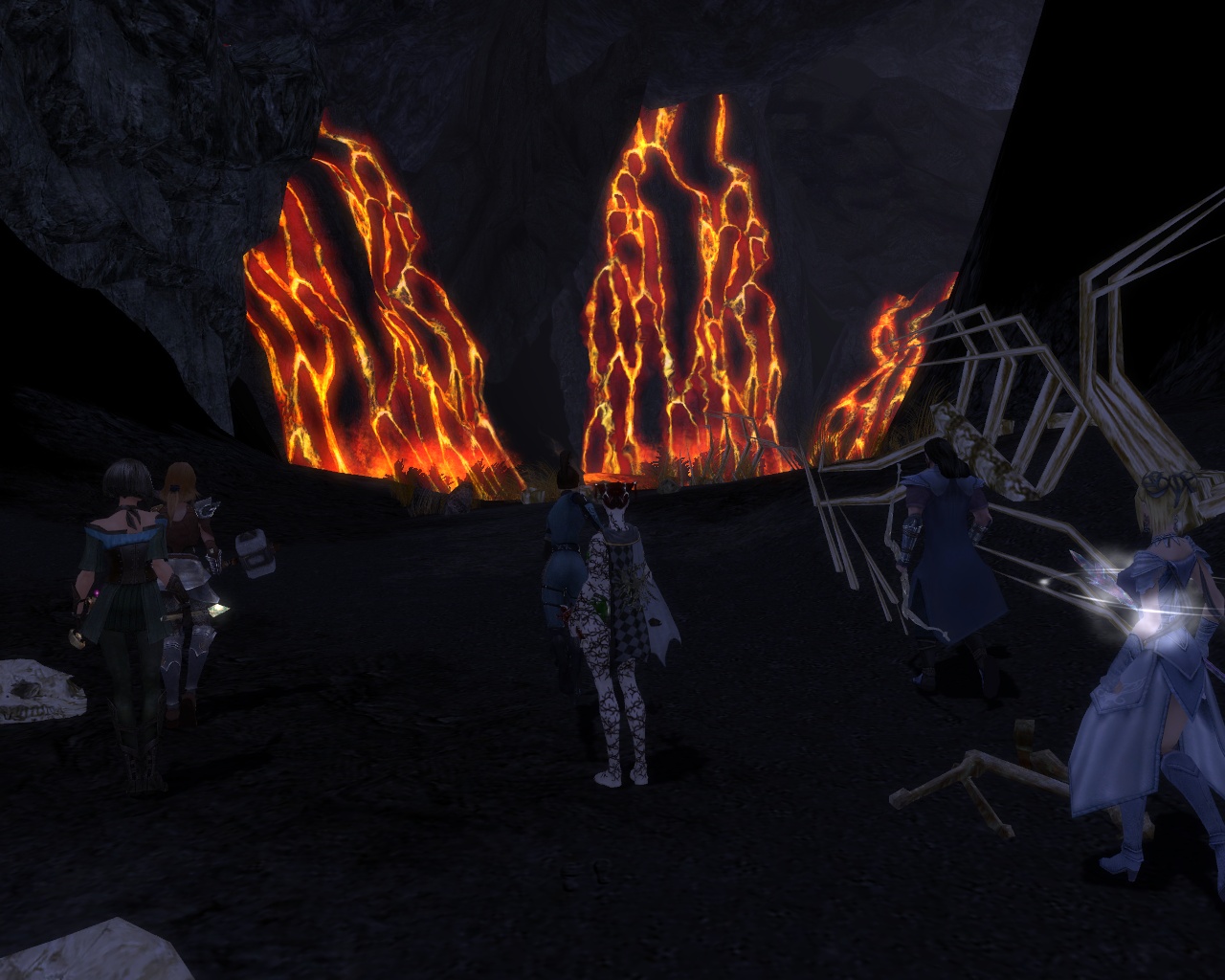
The amount of flowing lava here reminds me a bit of the Fire Islands, but this is somewhere else for sure. It’s also somewhere impressively dangerous-looking, though.
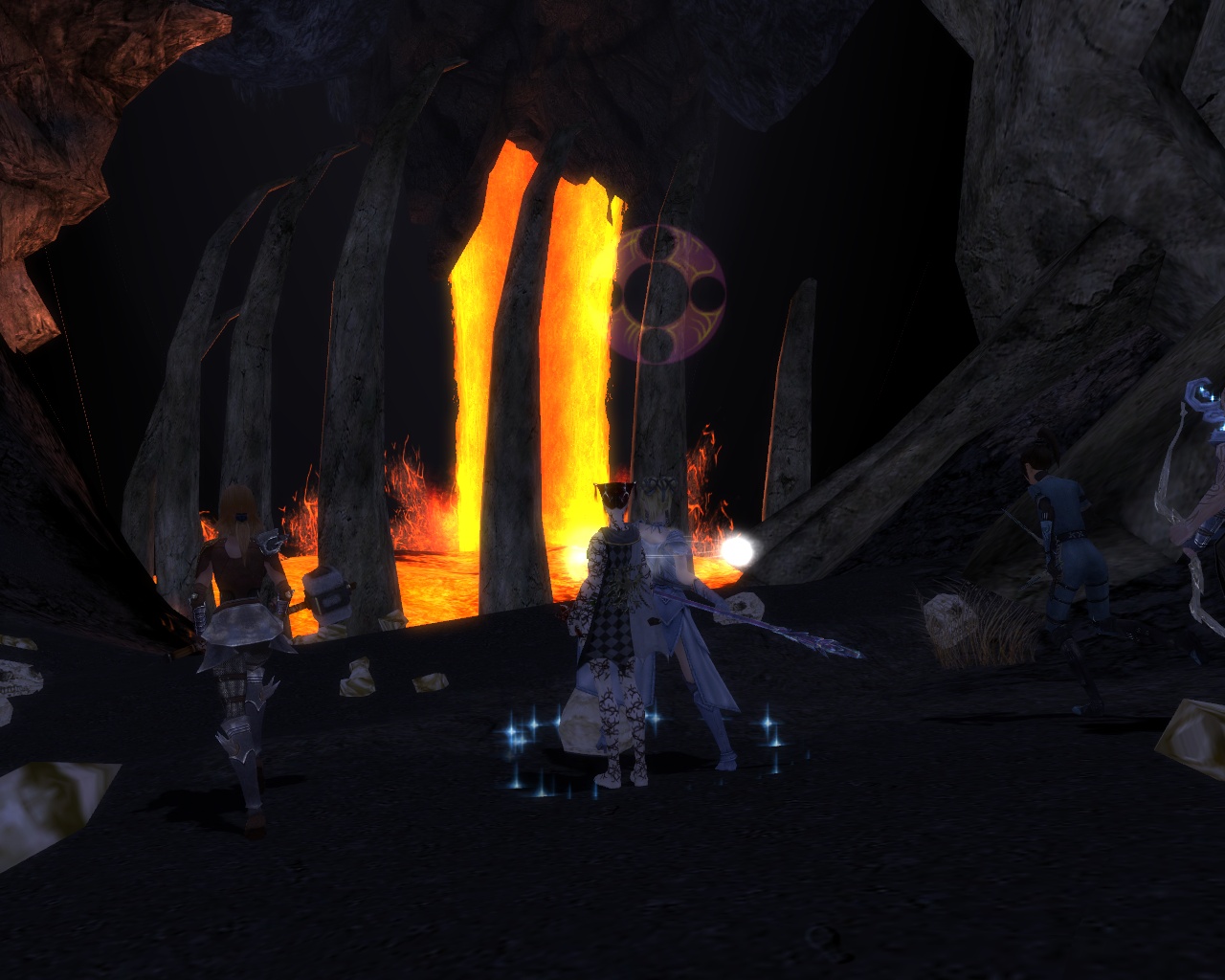
I know I say it all the time, but this game has truly spectacular art design. This scene here is yet another example of that. The dark cave contrasts with the bright lava, surrounded with those tooth-like rocks…
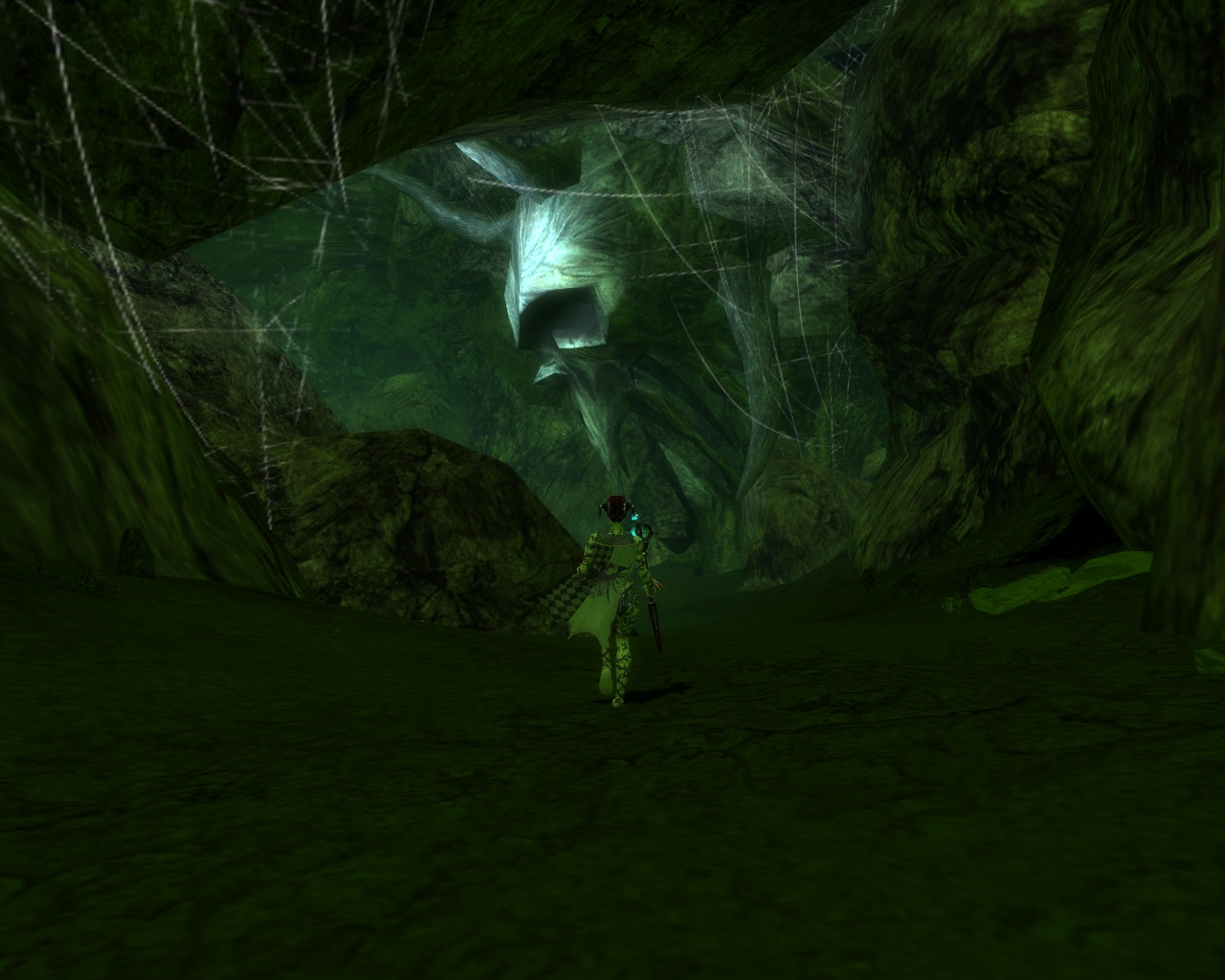
Yes, it’s more dungeon traversal in EotN. These places are often really tough, particularly solo with heroes. I never have beaten most of them.
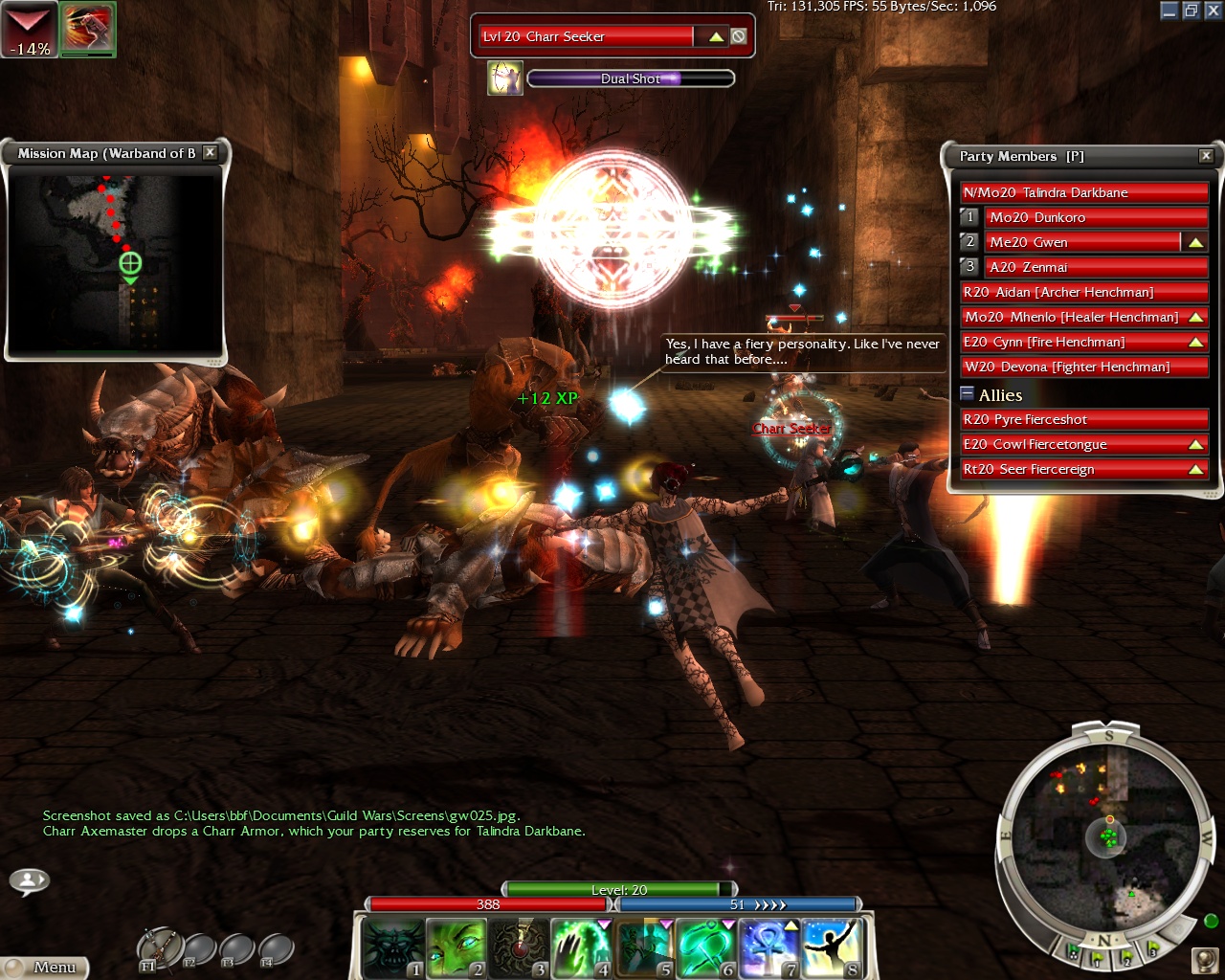
Hey, I didn’t turn the interface off! It looks like things are going reasonably, my death penalty isn’t too high. Warband of Brothers is one of the dungeons, and a quest, in EotN. You’re helping your Charr allies defeat some of the really evil Charr. Not that many of them are really all that good…

